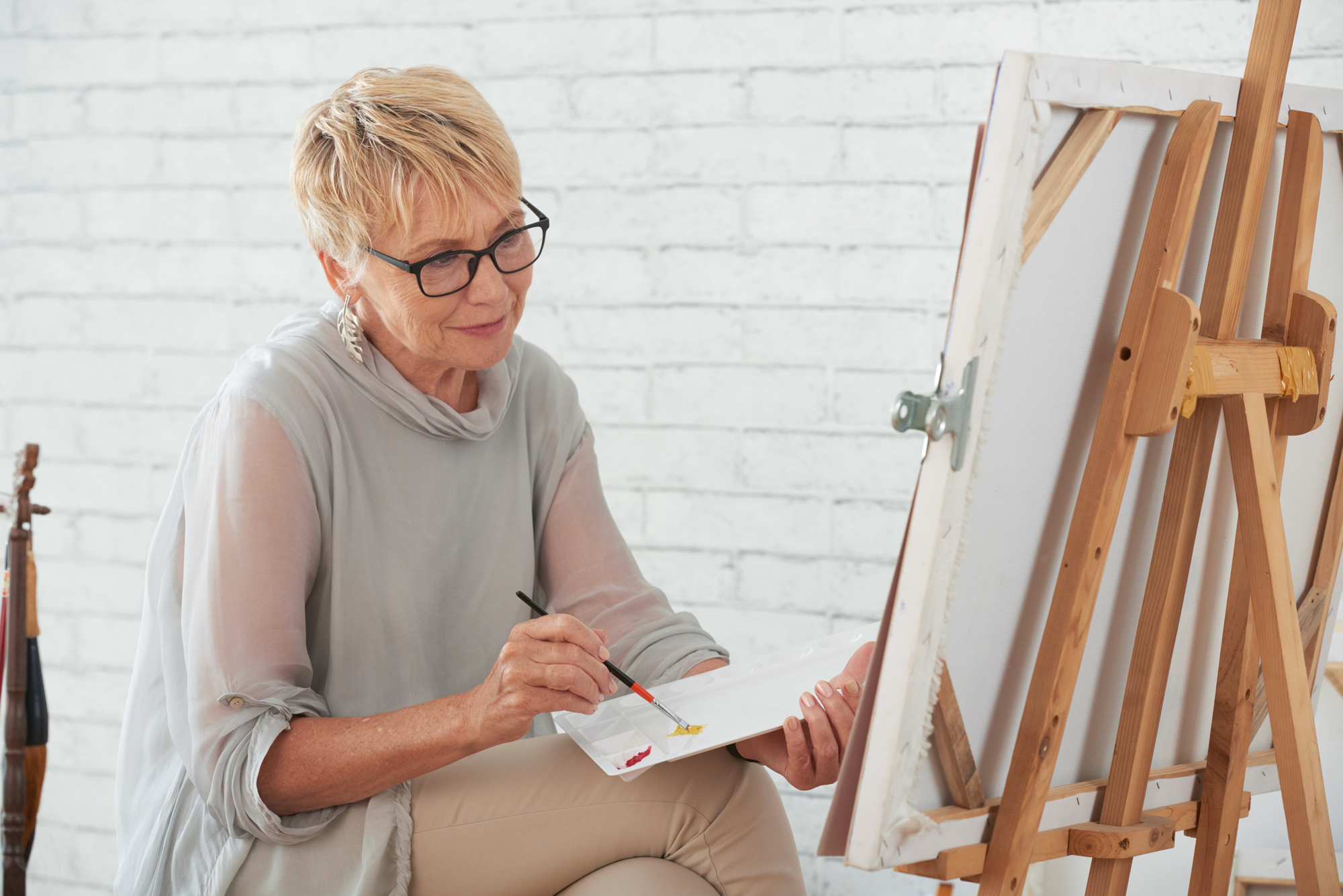
The Benefits Of Art Therapy On Well-Being
Posted on 09/24/2021
Artist Marc Chagall once said, “If I create from the heart, nearly everything works; if from the head, almost nothing.” For many, creating art is a way to express feelings and emotions. In fact, art therapy offers significant benefits to both psychological and physical well-being. Studies show that art therapy can calm the mind, reduce stress and even help mitigate memory issues. Read on to learn more about many benefits of art therapy on well-being.
Increases Social Interaction
Whether in-person or online, group art classes provide an opportunity to connect with others, have fun, laugh and build relationships with those who have a shared interest. Getting the “creative juices” flowing in a social atmosphere can boost mood and lower stress levels.
Reduces Stress Levels
It is perfectly normal to worry and even to feel some stress and anxiety from time to time. However, too much stress over a prolonged period can feel overwhelming and can negatively impact health. Excessive stress can even lead to or exacerbate chronic illnesses. Artistic pursuits such as painting, sketching, sewing or crafts can impart a sense of control and help soothe and calm the mind. In this way, creating art provides an outlet for expressing emotions and reducing stress levels.
Creates New Thought Patterns
Several research studies have shown that the process of creating art builds new synapses and enhances brain function. Just viewing artwork affects the brain as well, impacting brain wave patterns and emotions, the nervous system and sometimes increasing serotonin levels. Art can shift the viewer’s perspective, create new memories and can change the way the viewer experiences the world.
Improves Fine Motor Skills
Grasping a paintbrush, pen, pencil, charcoal stick or chalk helps to strengthen the small muscles in the fingers, hands and wrist. The opening and closing motion associated with using scissors has a similar effect, as does manipulating a sewing needle, crochet hook, knitting needles or weaving with a loom.
Improves Memory
Creating visual art or finding artistic expression through music or movement can help bring back old memories or uncover lost memories. In this way, art therapy can be beneficial for those suffering from Alzheimer’s or other forms of dementia. Art therapy can also have a very calming effect, making it helpful for those who struggle with agitation on a daily basis.
Provides a Cognitive Boost
Some degree of cognitive decline often occurs as part of the natural aging process. This can lead to “senior moments” (or short memory lapses), but it can also result in difficulty with concentration, decision making and learning new things. Art stimulates the brain, helping improve focus and concentration and combat foggy thinking.
Offers a Sense of Purpose
Art is an enriching activity. Working on an art project can provide a goal and an outlet for energy, as well as an opportunity to take the mind off other things. A completed project can help foster feelings of fulfilment and accomplishment.
Bringing Art into Your Life
Art therapy offers a broad spectrum of benefits for people of all ages, and fortunately it is not necessary to be a trained artist to enjoy creating and start reaping those benefits. Here are some ideas to unleash your creativity:
- Sign-up for an in-person or virtual painting or drawing class for beginners.
- Sign up for a session at a “paint and sip” shop.
- Create a collage of items you find beautiful or things that bring you joy.
- Bring a sketchbook with you to the local museum or attend a virtual museum tour for inspiration.
- Purchase a coloring book.
- Take a photography class.
- Watch a knitting or crochet YouTube video or get instruction from a friend
Daylesford Crossing offers a wide variety of creative and enriching activities and classes, including visits to local art exhibits and galleries. Learn more about our supportive care community by contacting us today.